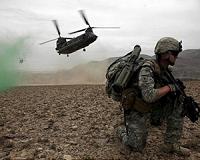| . |  |
. |
Eglin AFB FL (SPX) Aug 31, 2010 An F-16 Fighting Falcon was blown apart on the Eglin range as part of a test to determine future development of next-generation fighter technology. The explosion was intentionally initiated to test an aerial-target flight termination system. The test was conducted by the 780th Test Squadron, and was overseen by the QF-16 special program office. The purpose was to demonstrate that the FTS design will be sufficient to immediately terminate the flight of a QF-16, as well as determine a range safety debris footprint, said Kevin Diggs, QF-16 test and evaluation lead. The QF-16 is a supersonic reusable full-scale aerial target drone modified from an F-16. The QF-16 will provide a fourth generation full-scale aerial target for air-to-air and surface-to-air weapons system evaluation, conducted by the 53rd Weapons Evaluation Group at Tyndall AFB, Fla. At this time, the WEG uses QF-4s to conduct its full-scale aerial target missions. Each drone contains a FTS needed to satisfy range safety requirements for use in unmanned missions. The test was a milestone in the development to prepare the F-16 for its new QF-16 mission. "We're taking these non-operational aircraft and reusing them, recycling if you will," said Mr. Diggs. "We find a better purpose for them in making them flight worthy, which gives our weapons designers the opportunity to test our advanced weapons against a modern aircraft. Additionally, our warfighters get an opportunity to train against a quality fourth generation fighter." The non-operational F-16 from the 40th Flight Test Squadron, tail-numbered 78-0097, gave its life for the test. At approximately 11:15 a.m., with an audience looking on, the range officials exploded the aircraft. A small ball of flame burst from the middle of the aircraft, followed by thick black smoke, but no sound. The sound caught up soon after with a deep reverberating boom. The extent of the damage went undetected at first due to the amount of smoke billowing from the wreck. Once it cleared, it revealed the F-16 had been split in half between the cockpit and the wings. "It's sad to see an F-16 destroyed like this," said Maj. Wayne Chitmon, 82nd Aerial Targets Squadron, the squadron that will eventually own and operate the QF-16s. "At the same time, however, it's exciting to know the fourth generation ability of the F-16 will enhance the warfighters' capabilities." After the range was cleared, the test team began inspecting the wreckage and collecting data. In the coming weeks, test reports will explain the outcome and success of the test. The next step for the program office is to evaluate those reports from the 780th and Boeing, the QF-16's prime contractor. The project will then move forward to certifying the QF-16 with Air Armament Center range safety for unmanned flights in the future. "This test was one step toward satisfying range safety requirements," said Mr. Diggs. The first production QF-16 is scheduled to be delivered in 2014. The QF-16 will replace the QF-4, the third generation full-scale aerial target.
Share This Article With Planet Earth
Related Links US Air Force The latest in Military Technology for the 21st century at SpaceWar.com
 Army Improving Helicopter Protective Measures
Army Improving Helicopter Protective MeasuresWashington DC (SPX) Aug 27, 2010 The Army is now crafting an integrated approach to aircraft survivability that combines input from multiple on-board sensors and uses that information to detect, track and defeat incoming enemy fire. By combining input from a variety of different survivability systems now on-board rotary aircraft into a single system and display screen, the Army can streamline threat information delivery a ... read more |
|
| The content herein, unless otherwise known to be public domain, are Copyright 1995-2010 - SpaceDaily. AFP and UPI Wire Stories are copyright Agence France-Presse and United Press International. ESA Portal Reports are copyright European Space Agency. All NASA sourced material is public domain. Additional copyrights may apply in whole or part to other bona fide parties. Advertising does not imply endorsement,agreement or approval of any opinions, statements or information provided by SpaceDaily on any Web page published or hosted by SpaceDaily. Privacy Statement |